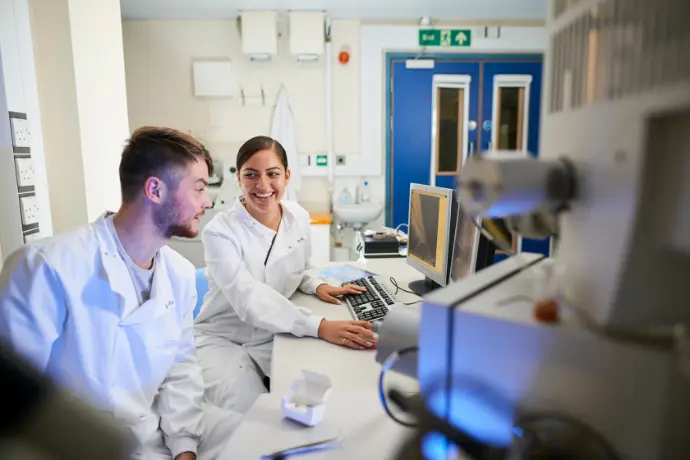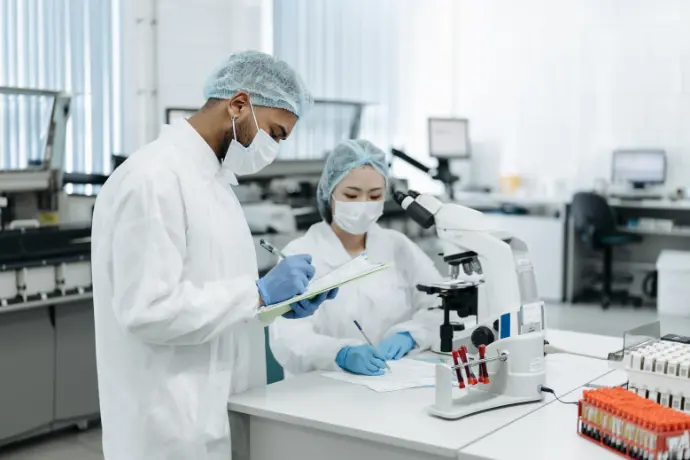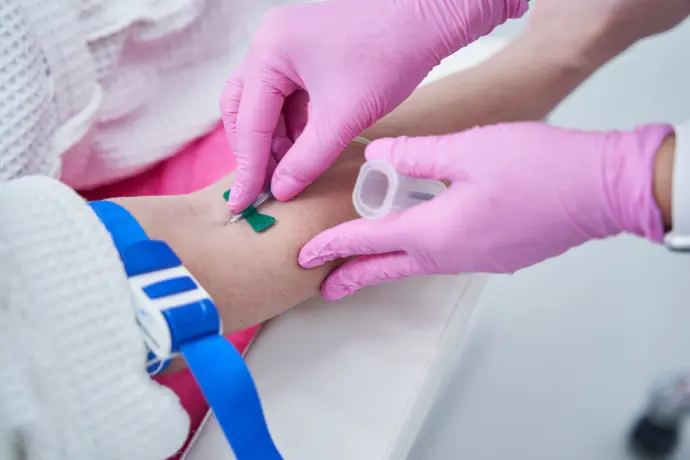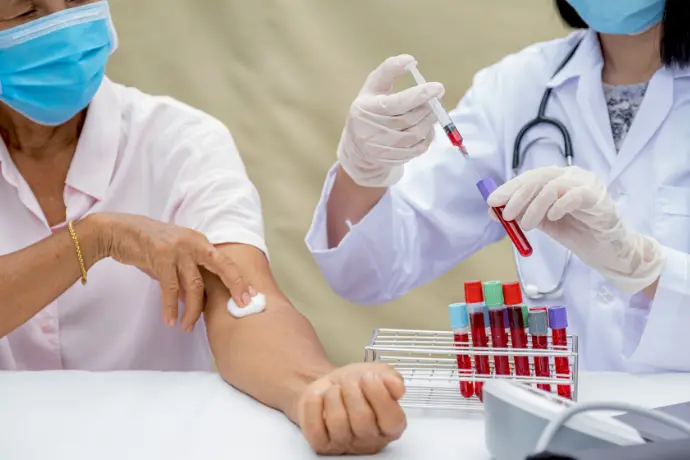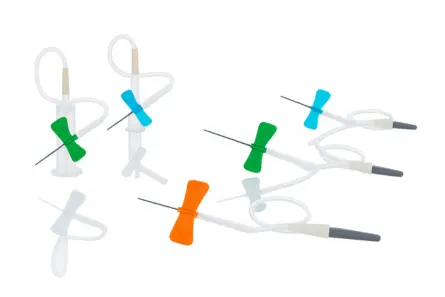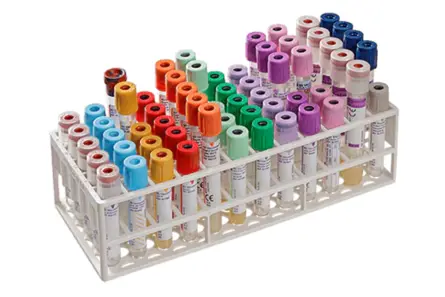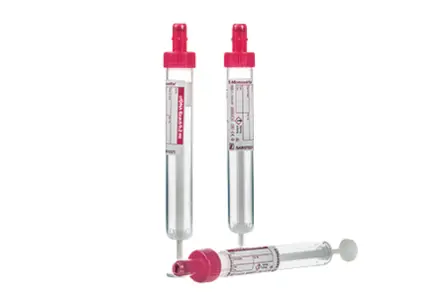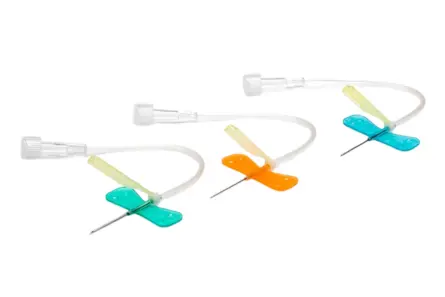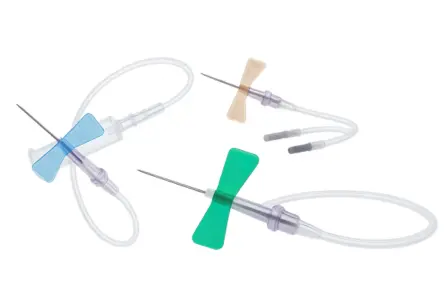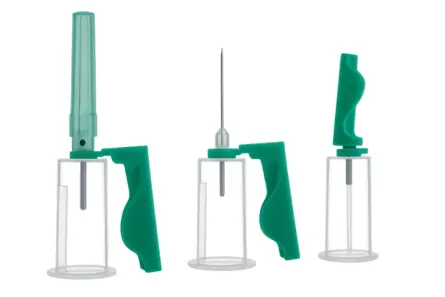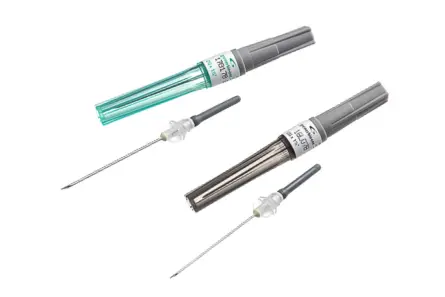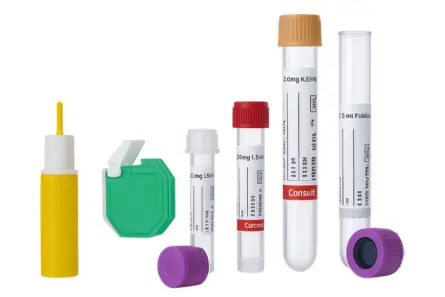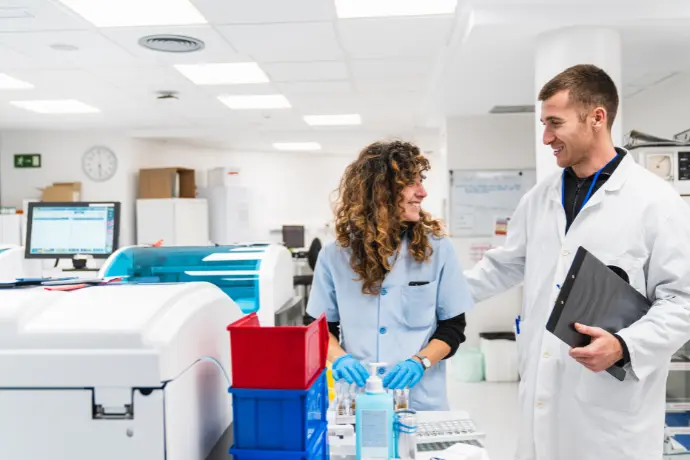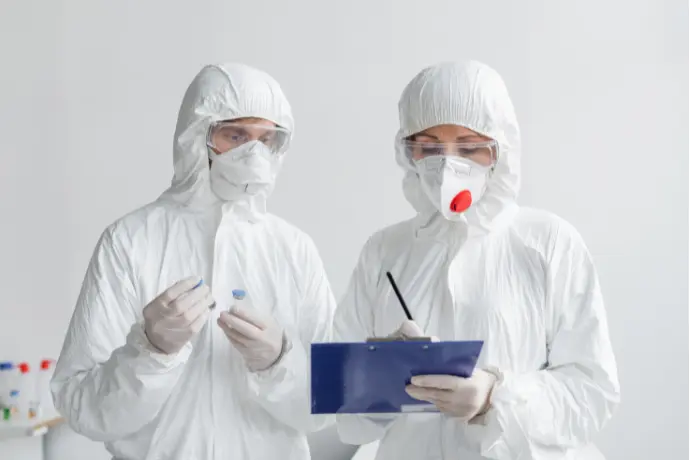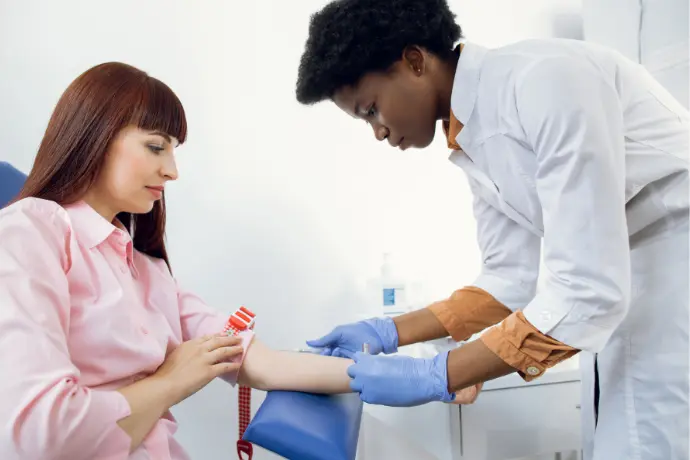
Phlebotomy Supplies
that cost up to 40% less than BD Vacutainer
Same tubes. Same quality. Without the brand tax that's bleeding your budget dry.


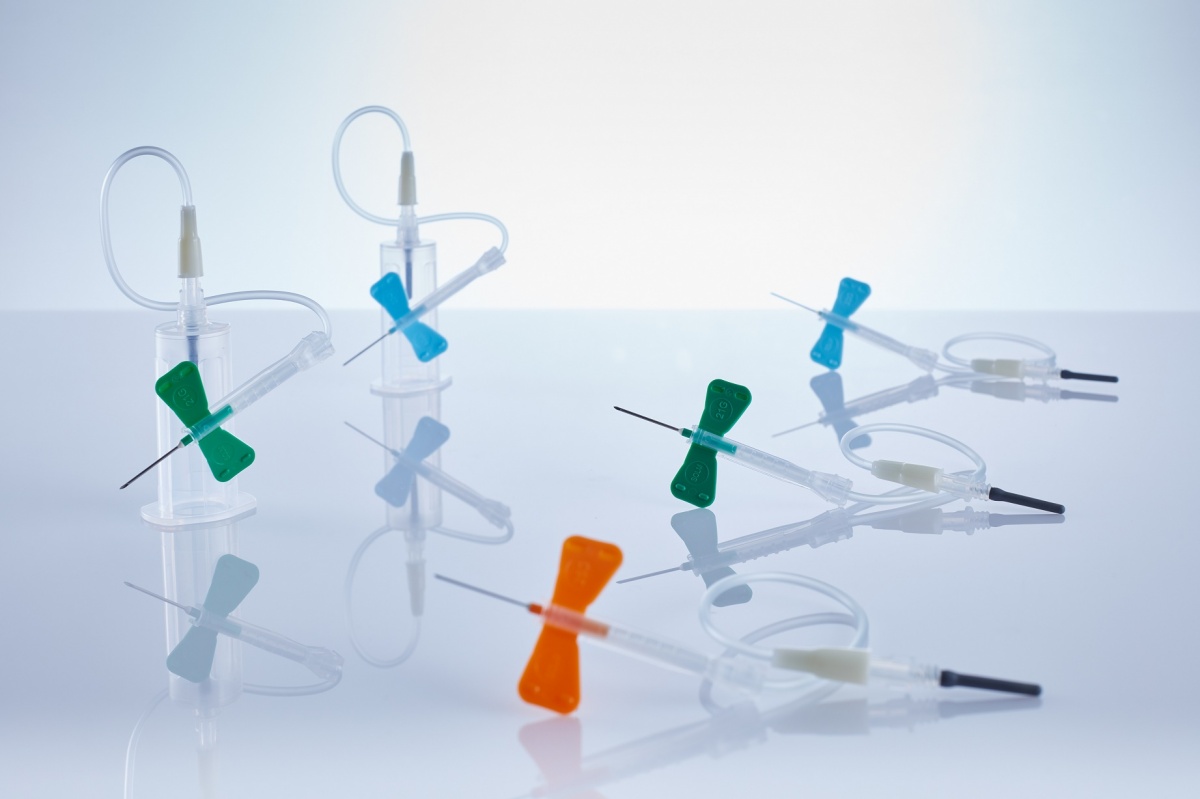
Blood Collection Sets
View Details
Blood Collection tubes
View Details
Blood Collection Accessories
View Details
Capillary Blood Collection
View Details
Needles
View Details
Snap Caps
View Details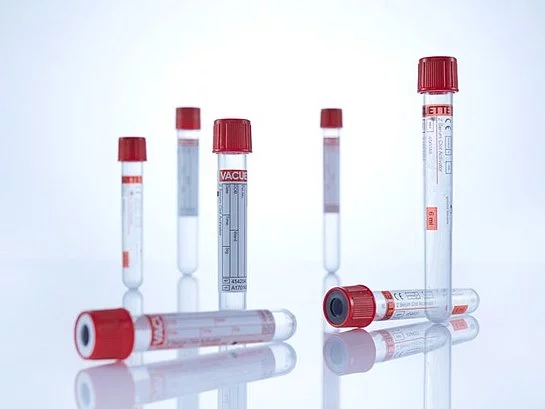
VACUETTE Blood Collection Tubes
View Details
Venous Blood Collection
View DetailsWhy labs switch their blood collection supplies to Block Scientific
Cut your tube spend up to 40%
Greiner VACUETTE® performs identically to BD at wholesale prices
No retraining needed
Same color coding, same protocols, same vacuum quality
Get off allocation lists
While others wait months for BD backorders, you're fully stocked
One vendor, every supply
Tubes, needles, holders, safety sets - everything ships together
Price protection locked in
If a price increase ever comes your way, you know about it months ahead
Offload your reorder burden
Set your standing order and don’t think about it for the next 12 months
Why Greiner phlebotomy supplies are preferred by phlebotomists and budget managers
Your lab doesn't need to overpay for blood collection supplies just because "that's what we've always ordered." Greiner Bio-One's VACUETTE® system matches BD Vacutainer spec-for-spec at wholesale pricing. Same vacuum integrity. Same additive stability. Same color coding your staff already knows.
The difference? You keep up to 40% more budget for what actually matters - running tests, not padding corporate profits.
Built-in safety without the markup:
VACUETTE® EVOPROTECT safety sets activate while the needle's still in the vein - one-handed, no fumbling, no exposure risk
QuickShield safety tube holders snap a barrier between your staff and contaminated needles in one motion
VISIO PLUS needles show flash instantly through a transparent hub - fewer missed sticks, happier patients
Complete tube selection for every department.
Every VACUETTE® tube ships with the same vacuum pull and additive concentration you expect. EDTA for hematology. Citrate for coag. Separator gel for chemistry. No surprises when you crack open a case - just consistent, predictable performance at a price that makes your CFO smile.
Supply chain stability when others can't deliver.
While facilities on allocation wait 16 weeks for BD orders, our Greiner inventory ships from US warehouses in 2-3 days.
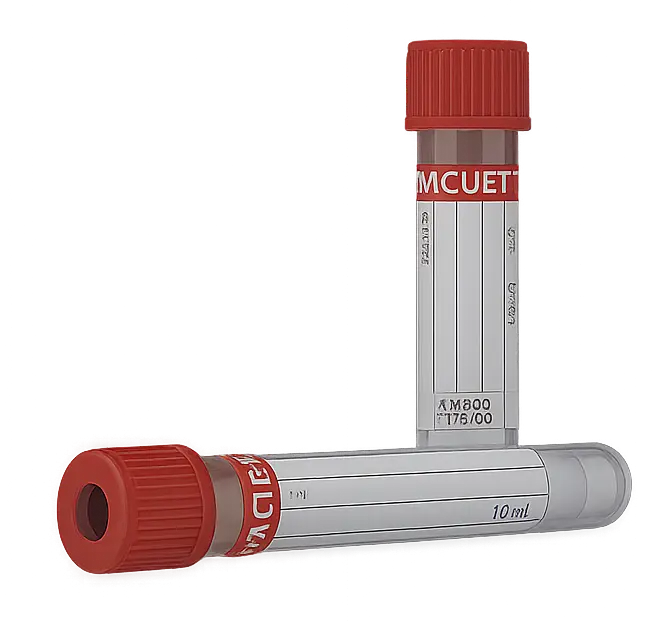
Tube and additive selector - match the right tube to every test
Stop second-guessing which tube to grab. This quick reference matches colors to tests, so your draws get processed right the first time:
The answers you need before switching to Block Scientific for your phlebotomy supplies
Will Greiner tubes work with our existing BD equipment?
Yes. VACUETTE® tubes fit standard holders, work with existing centrifuges, and maintain the same vacuum draw you're used to. No new equipment needed. Your staff picks up a Greiner tube and draws blood exactly like they did yesterday - except you pay up to 40% less per tube.
How fast can you deliver when we're running low?
Standard orders ship same-day from US warehouses and arrive in 2-3 business days. Running critically low? Call before 2 PM Eastern for next-day options. Want to set up a standing order so you don't have to think about it for the next 12 months? Your local sales rep can do that.
What about the order of draw - does it change?
No changes. Same CLSI-recommended sequence your phlebotomists already follow. Same color coding. Same tube positions. The only thing that changes is your cost per draw.
Are these really the same quality as BD?
Greiner Bio-One supplies blood collection systems to 7,000+ US hospitals. They're not a knock-off - they're a primary manufacturer with FDA clearances, CE marks, and ISO certifications matching any premium brand. Independent studies show identical analyte stability and separator gel performance.
What if we need to return to our previous supplier?
No contracts. No minimums after your first order. If for some reason you aren't happy with us, you're not tethered to us in any way. We keep customers by keeping them happy.
Can you match our current tube variety?
VACUETTE® covers every major tube type - pediatric microtubes through large-volume cultures. If you're using an obscure specialty tube, we'll source it or find an equivalent. One vendor, one invoice, complete coverage.
Which facilities benefit most from switching phlebotomy suppliers?
Hospital core laboratories
Your chemistry analyzer doesn't care what logo is printed on the tube - it cares about consistent vacuum, proper additives, and clean separation. VACUETTE® delivers all three while freeing up budget for equipment upgrades instead of consumable markup. Process 5,000 tubes daily? That's $50,000+ back in your annual budget.
Urgent care and walk-in clinics
Every dollar counts when insurance reimbursements keep shrinking. Stock the five essential tubes (SST, EDTA, citrate, culture, urine) at wholesale prices. No more choosing between quality supplies and keeping the lights on.
Reference laboratories
When you're processing 50,000+ specimens weekly, a few cents per tube becomes real money. Greiner's bulk pricing tiers mean the more you use, the more you save. Plus, automated reordering prevents the 3 AM panic when you realize Thursday's shipment never arrived.
Physician office labs
Small practices can't negotiate Fortune 500 pricing with BD - but they can access our pre-negotiated Greiner rates. Same professional-quality tubes the hospital down the street uses, at prices that work for 20-draw-per-day operations.
Mobile phlebotomy services
Your van space is limited and resupply runs eat productivity. Order mixed cases with exactly the tube ratios you need. We'll even kit them by route if that speeds up your morning load-out.
Skilled nursing facilities
Elderly patients need gentle draws with quality supplies - not whatever's cheapest on Amazon. VACUETTE® butterfly sets and microtubes mean fewer failed attempts on fragile veins, at prices that fit fixed Medicare budgets.
How does Greiner compare to
BD, Sarstedt, and other brands?
Greiner Bio-One VACUETTE® (what we supply)
- Safety mechanisms: EVOPROTECT activates in-vein, QuickShield covers contaminated needles
- Cost per tube: up to 40% less than BD list price
- Availability: Ships from US stock in 2-3 days
- Minimum orders: One case
- Contract requirements: None
BD Vacutainer (what you're probably using now)
- Safety mechanisms: Push-button activation, Eclipse needle shields
- Cost per tube: Premium pricing with annual increases
- Availability: 8-16 week lead times common
- Minimum orders: Often require bulk commits
- Contract requirements: Multi-year agreements typical
Sarstedt S-Monovette
- Different system: Aspiration mode vs. vacuum (requires technique change)
- Cost per tube: Premium pricing similar to BD
- Availability: Limited US distribution
- Best for: Specific applications where aspiration reduces hemolysis
Terumo
- Product focus: Mainly safety butterflies, limited tube selection
- Cost: Competitive on needles, limited tube portfolio
- Availability: Inconsistent supply chain
- Best for: Supplementing needle inventory
The reality
Unless you're running specialized protocols requiring aspiration mode, VACUETTE® gives you everything BD does at wholesale cost. Same vacuum technology. Same additive chemistry. Same color standards. Different price tag.
What's the correct order of draw and why does it matter?
Additive carryover between tubes can skew results. Follow this sequence (per CLSI guidelines) regardless of which brand you're using:
1. Blood cultures (sterile)
2. Citrate (light blue) - coagulation
3. Serum (red/gold) - chemistry
4. Heparin (green) - plasma chemistry
5. EDTA (lavender) - hematology
6. Fluoride (gray) - glucose
Three mistakes that cause redraws:
Underfilling citrate tubes (throws off blood-to-anticoagulant ratio)
Shaking instead of inverting EDTA tubes (causes hemolysis)
Drawing cultures after other tubes (contamination risk)
What's the correct order of draw and why does it matter?
Additive carryover between tubes can skew results. Follow this sequence (per CLSI guidelines) regardless of which brand you're using:
1. Blood cultures (sterile)
2. Citrate (light blue) - coagulation
3. Serum (red/gold) - chemistry
4. Heparin (green) - plasma chemistry
5. EDTA (lavender) - hematology
6. Fluoride (gray) - glucose
Three mistakes that cause redraws:
Underfilling citrate tubes (throws off blood-to-anticoagulant ratio)
Shaking instead of inverting EDTA tubes (causes hemolysis)
Drawing cultures after other tubes (contamination risk)
Which phlebotomy products solve the most common drawing problems?
EVOPROTECT safety blood collection sets
The safety shield activates while you're still in the vein - not after withdrawal when exposure risk peaks. Available in 21G, 23G, and 25G with standard or extended tubing. One-handed activation means you control the needle and protect yourself simultaneously.
Get your blood collection sets
VACUETTE® QuickShield safety tube holders
Snap the shield forward after drawing blood - instant barrier between you and contamination. Works with VISIO PLUS and standard multi-sample needles. No special technique, no reset needed between patients.
VISIO PLUS blood collection needles
See the flash immediately through the transparent hub. No more fishing for veins or wondering if you're in. Particularly valuable for difficult sticks where confirmation prevents multiple attempts.
MiniCollect® capillary tubes
When standard draws aren't possible - pediatrics, elderly, damaged veins - these 0.25-1.0 mL tubes preserve sample integrity with minimal volume. Same additive options as full-size tubes, scaled for capillary collection.
Who makes phlebotomy supply purchasing decisions at your workplace?
*Here’s how we help you
Laboratory directors and managers
You need standardization across departments, predictable costs, and zero compliance issues. VACUETTE® maintains your existing workflows while cutting consumable spend by up to 40%. That's budget you can redirect to equipment, training, or staffing.
Purchasing and procurement teams
Stop managing six vendors for blood collection supplies. One source, one invoice, one point of contact when issues arise. Volume pricing tiers reward consolidation - the more you centralize with us, the more you save.
Phlebotomy supervisors and educators
Your team needs supplies that work consistently without surprises. VACUETTE® tubes maintain vacuum integrity case after case. Safety features that actually get used because they're intuitive. No retraining required when you switch.
Infection control and safety officers
Engineering controls matter more than policies. EVOPROTECT and QuickShield mechanisms physically barrier contamination risk. Latex-free, DEHP-free options for sensitive populations. Documentation for every compliance audit.
Small practice managers
You can't negotiate enterprise pricing - but you can access ours. Same Greiner tubes major hospitals use, at prices that make sense for 50-draws-per-week operations. No contracts, no minimums after your first case order.
Phlebotomy Supplies FAQs
K2 (dipotassium) is a liquid additive, K3 (tripotassium) is spray-dried powder. Most US labs use K2 for better mixing and slightly more accurate cell counts. Check your analyzer's specifications - some older models calibrate specifically for one or the other.
Yes, VISIO PLUS needles fit standard vacuum tube holders including QuickShield safety holders. The transparent hub doesn't affect compatibility - it just makes your job easier by confirming venous access instantly.
Butterflies for: hand/wrist draws, pediatrics, elderly patients, chemo patients, anyone with fragile or rolling veins. Straight needles for: antecubital draws on healthy adults with good access. Butterflies cost more but reduce failed attempts.
Yes. EVOPROTECT safety sets contain no natural rubber latex and no DEHP plasticizers. Safe for patients with latex allergies and facilities avoiding endocrine-disrupting compounds.
Very strictly for citrate tubes (coagulation) - any contamination invalidates results. Somewhat flexible for routine chemistry and hematology if your lab has validated alternative sequences. When in doubt, follow CLSI guidelines.
MiniCollect® tubes come in 0.25 mL, 0.5 mL, and 1.0 mL sizes with all major additives. Pair with safety lancets for heel sticks or finger sticks. Same color coding as full-size tubes, just scaled for tiny humans.
For daily draws, almost nothing. All use the same color coding, same vacuum principle (except Sarstedt's aspiration option), same additives. The real differences: safety activation methods (BD's push-button vs Greiner's sliding shield), price (Greiner runs 30-40% less), and availability (BD often backordered, Greiner ships from stock). Sarstedt requires different technique if using aspiration mode. Terumo mainly competes on butterfly sets, limited tube selection.
For daily draws, almost nothing. All use the same color coding, same vacuum principle (except Sarstedt's aspiration option), same additives. The real differences: safety activation methods (BD's push-button vs Greiner's sliding shield), price (Greiner runs 30-40% less), and availability (BD often backordered, Greiner ships from stock). Sarstedt requires different technique if using aspiration mode. Terumo mainly competes on butterfly sets, limited tube selection.
A safety set has a built-in mechanism to cover the contaminated needle after use. The difference is when and how: Greiner's EVOPROTECT activates while still in the vein (safer), BD's push-button activates after withdrawal, Terumo's Surshield wings flip forward. All meet OSHA requirements, but in-vein activation reduces the exposure window between withdrawal and protection.
Match by: tube size (mL), additive type (not just color), and cap type (regular vs safety). Example: BD 367861 (4mL EDTA) = Greiner 454236. Your local sales rep can provide a complete cross-reference sheet.
Check these five things: (1) Additive concentration - must match your analyzer settings, (2) Draw volume - affects dilution ratios, (3) Separator gel type if applicable - some gels interfere with specific assays, (4) Stopper design - pierceable vs pop-top affects your automation, (5) Label area - enough space for your barcodes. Everything else is basically identical across major brands.
Tubes typically come 100 per tray, 10 trays per case (1,000 tubes). Minimum order is one case. Butterflies pack 50 per box, 4 boxes per case (200 units). Some specialty tubes have different counts. We can break cases for initial trials, but case quantities get you the best pricing. Your sales rep can set up custom kitting if you need specific ratios.
Essential kit: tubes for your five most common tests (SST, EDTA, citrate, culture, urine), 21G and 23G butterflies, straight needles, holders, tourniquets, gauze, tape, alcohol pads, sharps container, gloves in S/M/L, labels, requisition forms, cold packs, and a spill kit. Add pediatric supplies if you'll see kids. Keep a "par stock" card showing minimum quantities so you know when to restock.
Store at room temperature (15-25°C), away from direct sunlight. Don't refrigerate unless specified. Keep boxes closed to prevent dust contamination. Shelf life is typically 12-18 months for plastic tubes with additives, 24+ months for no-additive tubes. Rotate stock - first in, first out. Check expiration dates monthly. Expired tubes lose vacuum and additives degrade.
No. Tube holders are universal - they work with any brand's standard 13mm or 16mm tubes. The only exception: some specialty blood culture systems have proprietary holders. Your existing BD holders work fine with Greiner tubes, and vice versa. The needles and tubes might be branded, but the holder doesn't care.
A tube holder is for drawing blood directly from a patient - needle on one end, tube on the other. A transfer device moves blood from a syringe into tubes after the draw - useful for difficult sticks where you draw with syringe first, then distribute to tubes. Some transfer devices have safety features to prevent needlesticks during the transfer process.
Start with: (1) Safety needles - 21G and 23G straight plus butterflies, (2) Tube holders - at least 3 plus safety holders, (3) Common tubes - 100 each of SST, EDTA, citrate, plus cultures and urines, (4) Supplies - tourniquets, gauze, tape, alcohol pads, bandages, (5) Safety - sharps container, gloves all sizes, spill kit, (6) Documentation - requisition forms, labels, pens. Budget roughly $500-800 for a complete station setup.
Post these at every station: (1) Order of draw chart - laminated, eye level, (2) Difficult draw algorithm - your protocol for failed attempts, (3) Needle stick protocol - immediate response steps, (4) Critical value notification list - who to call for panic values, (5) Tube guide - which tests need which tubes. Keep in a binder: SDSs for cleaning supplies, spill response procedure, equipment manuals. Update quarterly or when protocols change.
Make the switch to volume pricing
Stop subsidizing brand marketing with your supply budget. VACUETTE® blood collection systems deliver identical performance at up to 40% less cost. No contracts. No minimums after your first order. No risk.
Your current supplier hopes you won't do the math. We're betting you will.
Serving clinical laboratories since 1980 | Price matching available | Financing options for qualified facilities.









